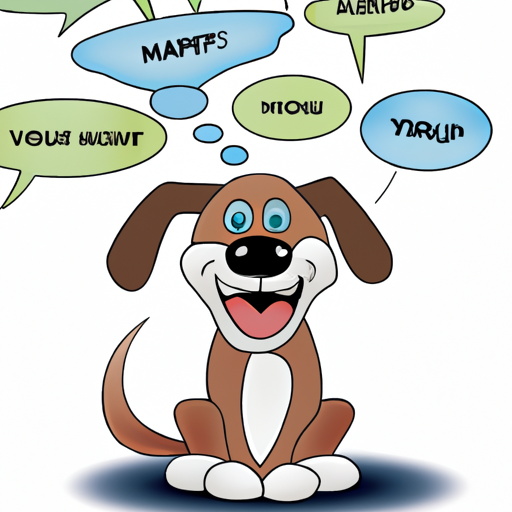Dogs are fascinating creatures, aren’t they? You, as a caregiver, might have often wondered why your furry friend wags its tail. Let’s dive in and explore this intriguing aspect of canine behavior.
Understanding Your Dog’s Body Language
Dogs communicate with us in many ways, and one of the most prominent is through their tail. It’s not just a frivolous appendage; it’s a powerful communication tool that reveals a lot about your pet’s emotional state.
- Happy Wag: You’ve seen it, haven’t you? When you come home after a long day, your dog greets you, tail wagging enthusiastically. This is a sign of happiness and excitement.
- Nervous Wag: A slight wag with the tail down indicates nervousness or submissiveness.
- Agitated Wag: A stiff tail that’s wagged vigorously could mean your dog is agitated or overstimulated.
The Science Behind the Wag
Why does a dog wag its tail, you ask? According to researchers, it’s all about the brain and the nervous system. When a dog feels a certain emotion, the brain sends a signal to the muscles in the tail, causing it to wag.
| Emotion | Tail Position | Tail Movement |
|---|---|---|
| Happy | High | Fast, loose wag |
| Nervous | Low | Small, tight wag |
| Agitated | High | Stiff, rapid wag |
The Direction of the Wag
Did you know the direction of your dog’s wag can also indicate their emotions? Research suggests that dogs wag their tails to the right when they are happy or confident and to the left when they are anxious or scared.
Differences among Breeds
All dogs wag their tails, but not all wags are the same. Tail shapes and sizes can affect the way a wag looks. For instance, a Corgi’s wag is less visible due to its smaller tail, while a Labrador’s wag is more noticeable because of its long, whip-like tail.
Teaching Kids about Tail Wagging
As a caregiver, it’s important to teach kids how to interpret a dog’s tail wagging. It can help them understand if a dog is friendly and approachable or if it’s better to maintain some distance.
- Happy wag: Safe to approach, under adult supervision.
- Nervous wag: Better not to approach.
- Agitated wag: Definitely not safe to approach.
FAQs
Q1: Can dogs control their tail wagging?
A1: Dogs do have some control over their tail wagging, but a lot of it is an automatic response to their emotional state.
Q2: Do dogs wag their tails when they are alone?
A2: Generally, dogs don’t wag their tails when they’re alone, as it’s a social behavior meant for communication.
Q3: What does it mean if my dog doesn’t wag its tail?
A3: Lack of tail wagging doesn’t necessarily mean your dog is unhappy. It could be focused, relaxed, or just not in a mood to wag its tail.
Q4: Can tail wagging indicate health issues?
A4: In some cases, changes in tail wagging can indicate health issues. If your dog’s tail wagging habits change suddenly, it’s best to consult a vet.
Remember, understanding your dog’s tail wagging can foster a stronger bond between you and your pet. So, keep observing, keep learning, and keep caring for your furry friend.



